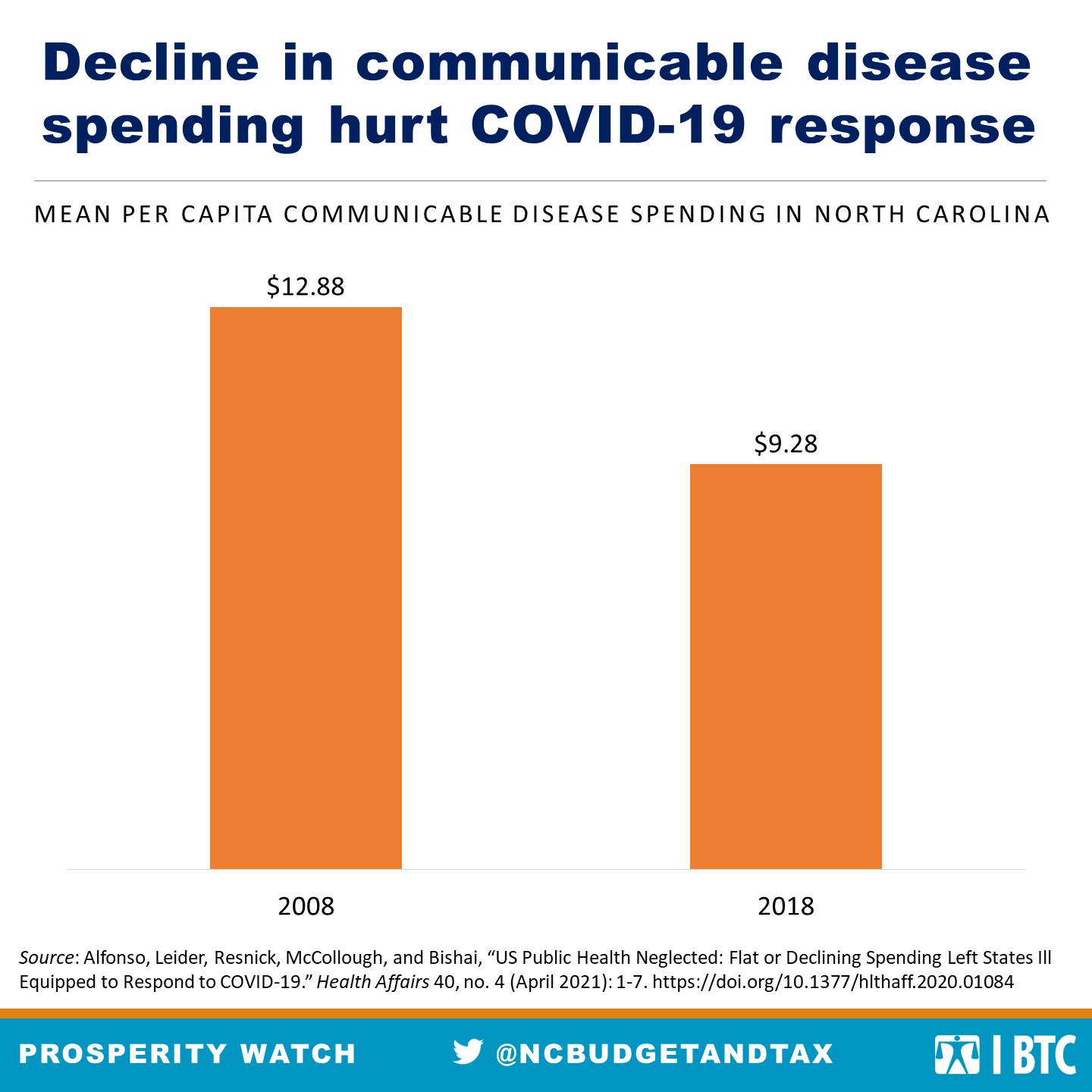For the past decade, North Carolina has chronically underfunded the state infrastructure, programs, and services that are critical for supporting every family and community in our state with the resources they need. In order to rebuild a more equitable state, the NC General Assembly must prioritize people over profitable corporations and make the public investments necessary to ensure every North Carolinian can thrive.
Here’s the Story
The COVID-19 pandemic has shone a spotlight on the longstanding underinvestments in public health and public health infrastructure across the United States, yet North Carolina is was particularly poorly positioned going into the pandemic, ranking 41 out of all states in per person public health funding, according to America’s Health Rankings.
The additional influx of dollars directed to local health departments has been critical for ensuring they can adequately respond to the COVID-19 pandemic, however the temporary nature of funds and the restrictions placed on them by various levels of government fail to address the decades of underinvestments, particularly in staffing and maintaining services in other critical areas including communicable diseases.
Public health departments are pillars in communities. They provide information about health risks and healthy behaviors, connect people to health services either directly or through supporting providers in a community, and respond to communicable diseases, like COVID-19, and public health emergencies as well as environmental health hazards.
Building up North Carolina’s public health system will be critical for an equitable response and eventual recovery from COVID-19, and beyond, as public health departments play a critical role in ensuring access to services — including immunizations, chronic disease control, emergency response, pregnancy care management, and WIC — particularly for underserved and marginalized communities.
By The Numbers
- North Carolina ranks 41 out of all states in public health investments per person at $61 (America’s Health Rankings)
- State public health spending from 2010 to 2018 dropped by more than 27% after adjusting for inflation and population increase (KHN, AP, ASTHO)
- North Carolina has 85 local health departments serving 100 counties (NACCHO)
- From 2008 to 2018, NC’s population grew by 12%; however, state public health funding fell by 28% (BTC report)

Read more at ncjustice.org/disease_spending
Telling the story of impact
Response to COVID-19 was hampered by years of underinvestment at the state and national level. As North Carolina responded to the pandemic with public health measures and as vaccinations became available, local public health departments were critical to sharing health practices, conducting contact tracing and connecting people to treatments. However, inequities in the ability to reach all communities with education and health services and the ability to quickly deploy the staffing depended significantly on the influx of federal resources. Years of underinvestment meant building a lot of the infrastructure while responding to a historic public health crisis — a bad combination for rapid response that needs to be inclusive of all communities.
Check out these news stories for more details:
- News & Observer: Underfunded for years, many NC public health departments lack resources to fight COVID
- NC Health News: Public health workers are on the front lines of the fight against coronavirus. But they’ve bled resources for years
- Kaiser Health News: Politics Slows Flow of US Pandemic Relief Funds to Public Health Agencies
- Kaiser Health News: Hollowed-Out Public Health System Faces More Cuts Amid Virus
A healthy North Carolina is undermined when communities don’t have adequate, equitable public health infrastructure. As the state continues to grow, North Carolina cannot afford to leave behind the health of entire communities. By means of the state budget, North Carolina has the tools to invest equitably in systems that ensure all North Carolinians can achieve the highest level of health and wellbeing. Addressing health equity through public investments means focusing spending efforts on communities that face the most significant barriers to achieving good health. The state can support a comprehensive set of investments that serve as the foundation for healthy communities.
Check out these resources for more details:
 Justice Circle
Justice Circle